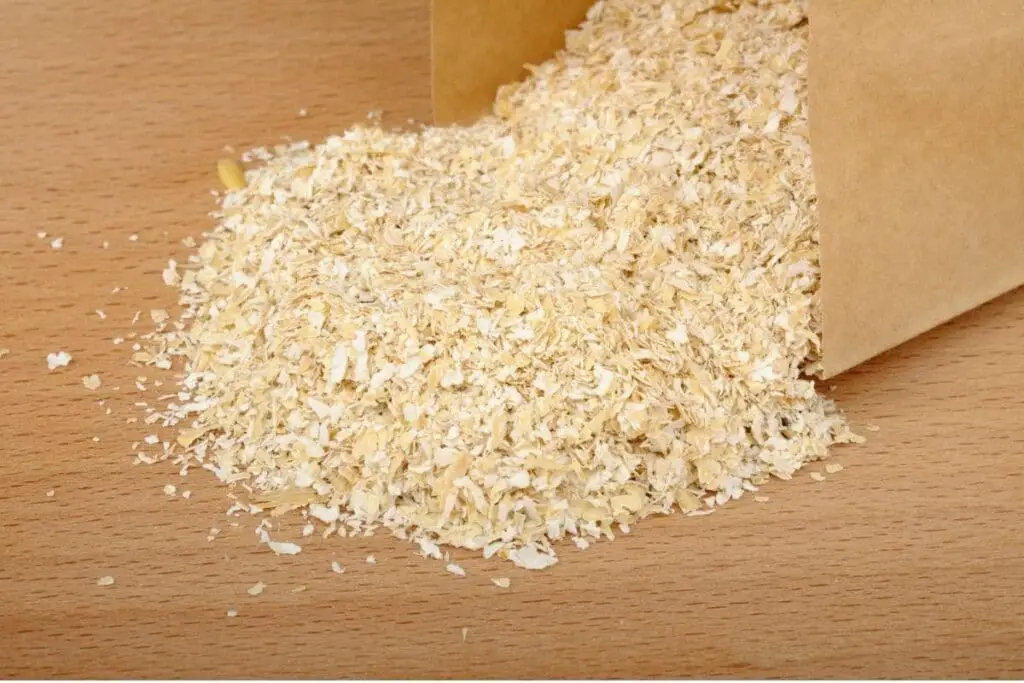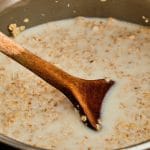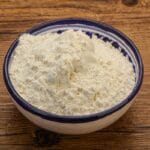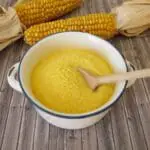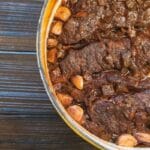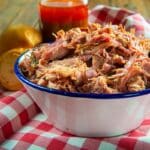There are 5 oat bran substitutes: Corn Bran, Rice Bran, Wheat Bran, Flaxseed, and Oatmeal/Rolled Oats. Each substitute offers unique nutritional benefits and can be used in a variety of sweet and savory dishes, making them suitable alternatives for oat bran in your diet.
If you want a low-cholesterol, nutritious, high-fiber diet, then including oat bran in your meals can help you achieve your health goals. Although not very flavorful in itself, oat bran does add a delicious toasty, nutty texture when baking cookies, bread, and muffins.
The fiber-rich ingredient can also be eaten as a warm cooked porridge, sprinkled over breakfasts, and added to smoothies.
If you have run out of oat bran while making breakfast or baking there are a few oat bran alternatives you can use that offer just as many health benefits. Here’s what you need to know when choosing the best substitute for oat bran.
What Is Oat Bran?
Full of important vitamins, minerals, and fiber, oats are considered one of the healthiest grains to include in your diet. After harvesting, the inedible outer hull of the grain is removed.
The remaining grain itself (called the oat groat) is processed to make oatmeal. Situated beneath the inedible hull is the oat bran layer. This can either be removed and sold separately or be left on the grain in products such as oat groats and steel-cut oats.
The oat bran layer contains a high amount of fiber and is naturally gluten-free. However, many factories processing oats manufacture other types of gluten grain products as well.
This means that the bran can be contaminated with gluten during any part of the production process. If you are allergic to gluten make sure that the product you buy is specifically labeled as gluten-free.
Oat Bran Health Benefits
Nutrient-Rich
Oat bran features key vitamins and minerals with a higher protein and fiber content than rolled or quick oats.
Antioxidants
Oat bran is high in antioxidants that are known to assist in the prevention of certain chronic diseases.
Reduce Heart Disease Risk Factors
Nutrition is an important part of maintaining a healthy heart. Since oat fiber has cholesterol lowering properties, including it in your diet can help reduce risk factors associated with high cholesterol and high blood pressure.
Stabilizes Blood Sugar Levels
Oat bran is high in soluble fiber which assists in slowing down the digestion and absorption of carbohydrates. This prevents sugar spikes and allows for more stabilized blood sugar levels. Poor blood sugar control, especially in those suffering from diabetes, can lead to blindness, strokes, or heart attacks.
Digestive Health
Oat fiber is rich in both soluble and insoluble fiber. Each type of fiber serves a different purpose in the digestive system which makes it the ideal dietary supplement for healthy gut and bowel function. This in turn can lower the risk of colorectal cancer.
Weight Loss
Oat bran is by no means a magic weight loss solution but as it is high in soluble fiber it assists in appetite suppression and giving you the feeling of fullness. If, for example, you eat oat bran for breakfast, you may feel fuller for longer and consume fewer calories with your next meal.
Versatility
Oat fiber is very easy to add to your diet as a warm breakfast cereal, in baked goods, and smoothies. It doesn’t have to feel like a chore but can naturally be incorporated into the meals you already enjoy to boost your nutrition.
Best Oat Bran Substitutes
Whether you have an allergy, have run out of stock, or just need to change things up in your diet, these substitutes for oat bran are easy to find, and offer just as much nutrition.
1. Corn Bran
Corn or maize bran is a great substitute to replace oat bran. It contains more than twice the amount of fiber and is high in vitamins and minerals, including iron, copper, and selenium. Similar to oat bran, corn bran is made from the outer shell of the corn kernel.
Although it has most of the same health benefits and can be substituted measure for measure, corn bran isn’t quite as flavorful as its oat counterpart. When using corn instead of oats you may have to adjust other seasonings in your recipe to enhance the somewhat bland flavor.
Suitable to use in: Breakfast cereals, snack bars, cookies, corn bran muffins, bread, and as a thickening agent.
Substitute quantity: Use corn as a replacement measure for measure.
2. Rice Bran
Made from the outer layer of rice grains, rice bran has a neutral flavor which makes it suitable for a variety of sweet and savory applications.
It has exceptional nutritional value being high in various minerals and vitamins and also boasts a high fiber content. Some compounds in rice bran have antimicrobial and anti-inflammatory properties.
Suitable to use in: Baked foods including bread, muffins, breakfast cereals, and smoothies.
Substitute quantity: Replace measure for measure with oat bran.
3. Wheat Bran
If you find maize or rice bran too fiber-dense, wheat bran might be a better choice to substitute oat bran. Although it is still high in dietary fiber, it is less dense than other grain husks with fewer grams of fiber per cup.
It has a great nutrient repertoire but like whole wheat flour, wheat bran contains gluten which will be problematic if you have an intolerance or gluten sensitivity.
Adding cereals with wheat fiber to your diet daily, even in small quantities, can be beneficial to your digestive function, yielding results within two weeks.
Suitable to use in: Batters for bread, muffin recipes, waffles, and pancakes. Add wheat bran to breakfast cereals as well as soups and stews for thickening.
Substitute quantity: Replace measure for measure.
4. Flaxseed
Unlike other oat fiber substitutes, flaxseed is used in its entirety as a whole seed or can be ground into a powder. It is also referred to as linseed, and besides a range of nutritional benefits, it is known to be a source of iron and Omega-3 fatty acids.
From a nutritional perspective, ground flaxseed may be easier to process in your body to extract beneficial nutrients.
Grinding the seeds yourself just before use will yield the best and freshest nutrient content whereas buying pre-ground flax may result in some nutrient loss during processing and storage.
Flaxseed is generally only added in small amounts since it has a much stronger flavor than other bran substitutes and can become thick and pasty if too much is added.
Suitable for: Whole seeds are great in bread and muffins batters as well as sprinkled on salads and sandwiches. Ground flax powder can be sprinkled over breakfast porridge, fruit, yogurt, or added to a smoothie.
5. Oatmeal or Rolled Oats
Oatmeal or rolled oats is the less processed version of oat bran including both the grain and the outer bran layer. You will therefore get all the great nutritional benefits from the bran, plus that of the grain itself.
Oatmeal is good substitute for porridge, oatmeal cookies, or as a topping baked on homemade bread. However, when baking muffins and similar types of lighter baked goods, rolled oats will yield a much denser and heavier product.
Roughly grinding the oatmeal in a blender or food processor may help with this, but still won’t offer the same texture entirely.
Suitable for: Making cooked porridge, cookie batters, or topping bread when baking.
Substitute quantity: Replace one cup of oat bran with ¾ cup rolled oats depending on the application.
FAQs
Conclusion
A high-fiber diet is beneficial for many reasons. Not only does it assist in lowering cholesterol, managing blood sugar, and digestion, but it also reduces the risk of certain chronic illnesses.
Regardless of whether you choose bran rice, bran wheat, or oat grain option, incorporating bran into your daily meal plan is very easy and can be as effortless as sprinkling it over whatever you are already eating. If you have more time, get baking, and add it to muffins, cookies, and bread batters.
Always check that the products you purchase are GMO-free to ensure you get the health benefits promised and keep an eye out for gluten-free options if you have allergies.
*image by Rusgri/depositphotos
